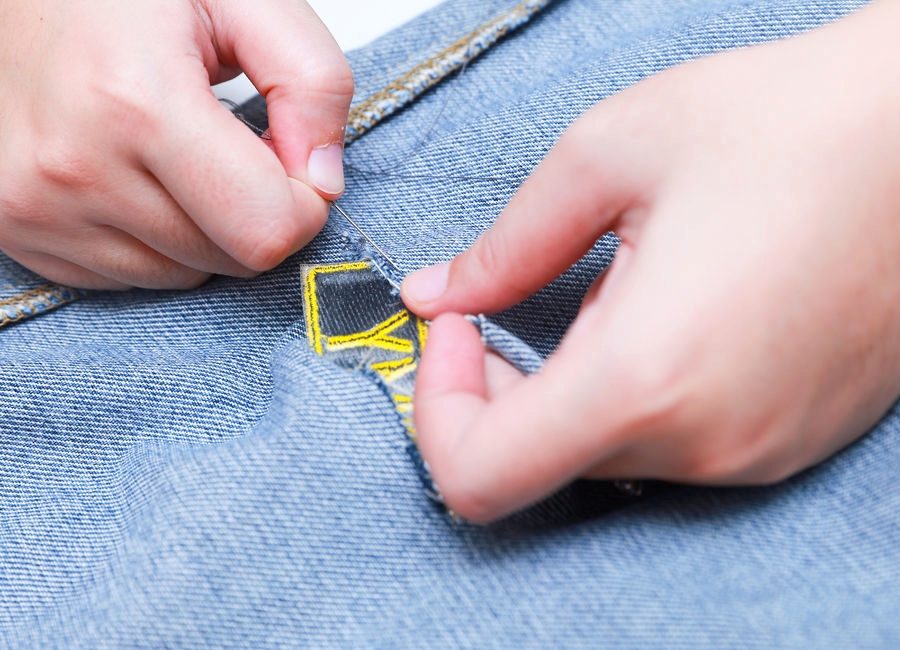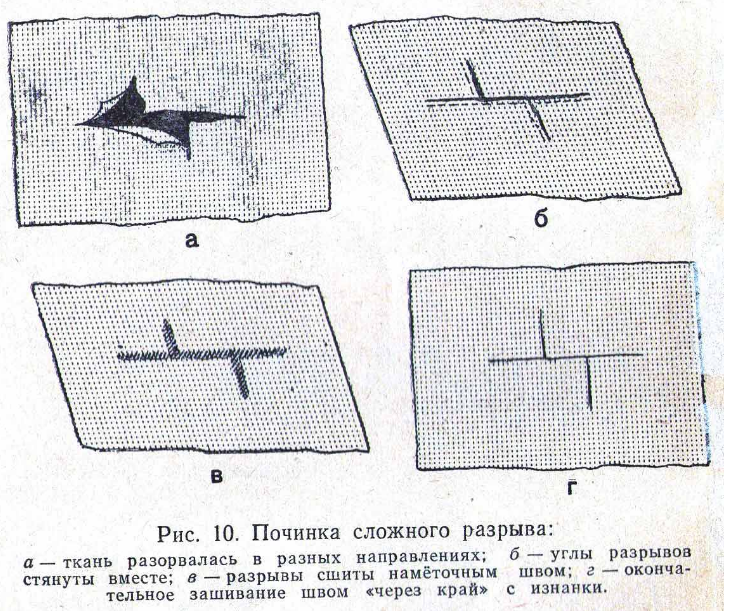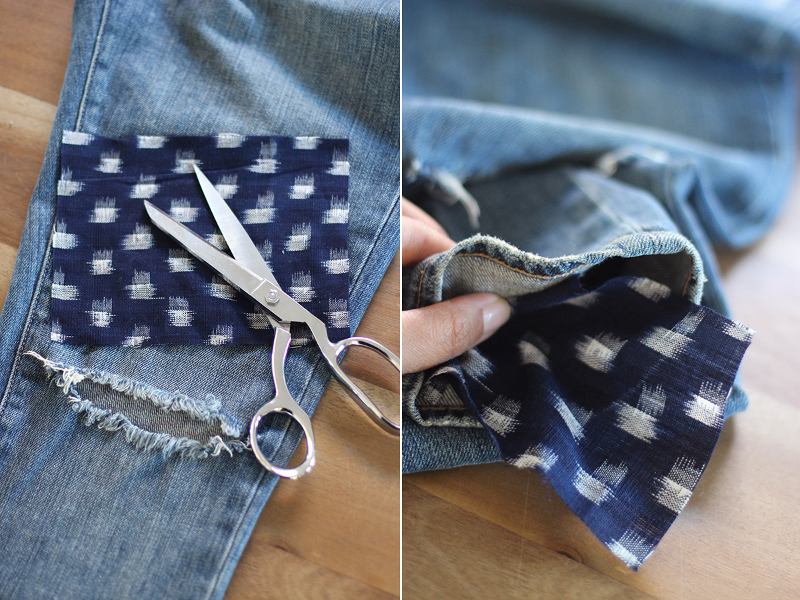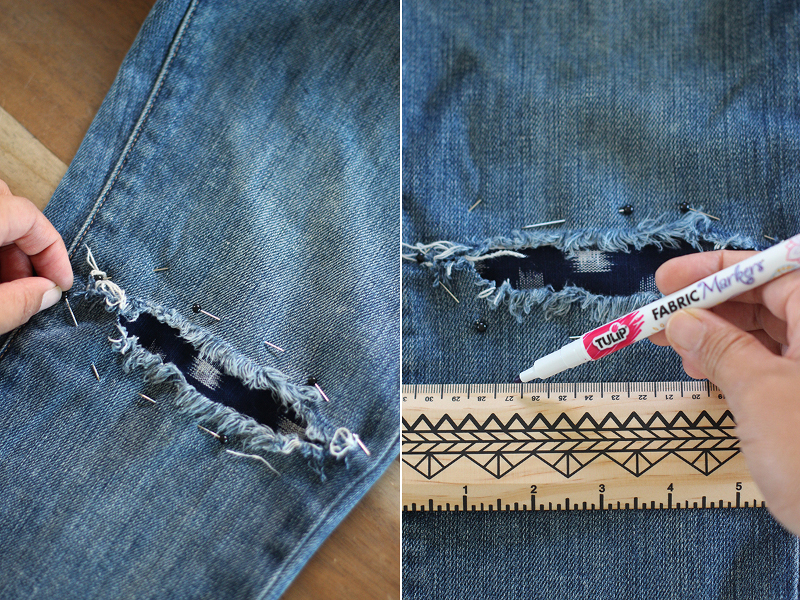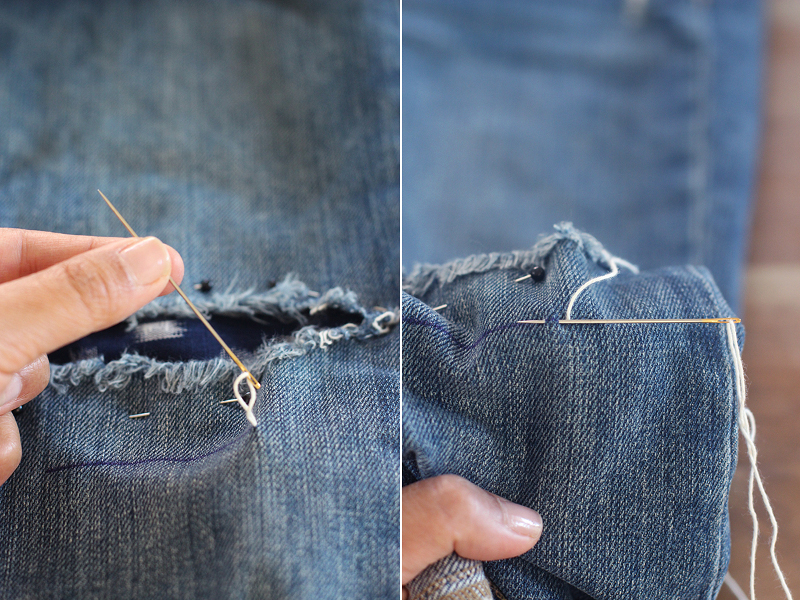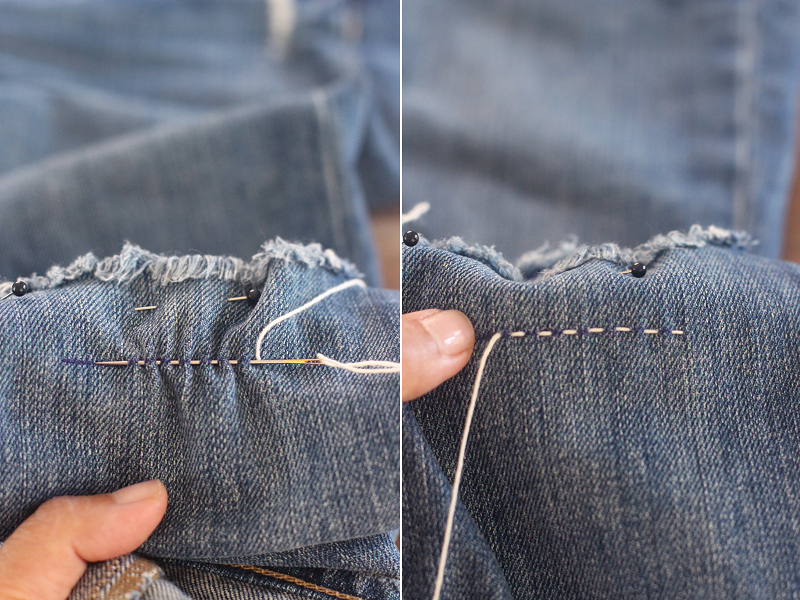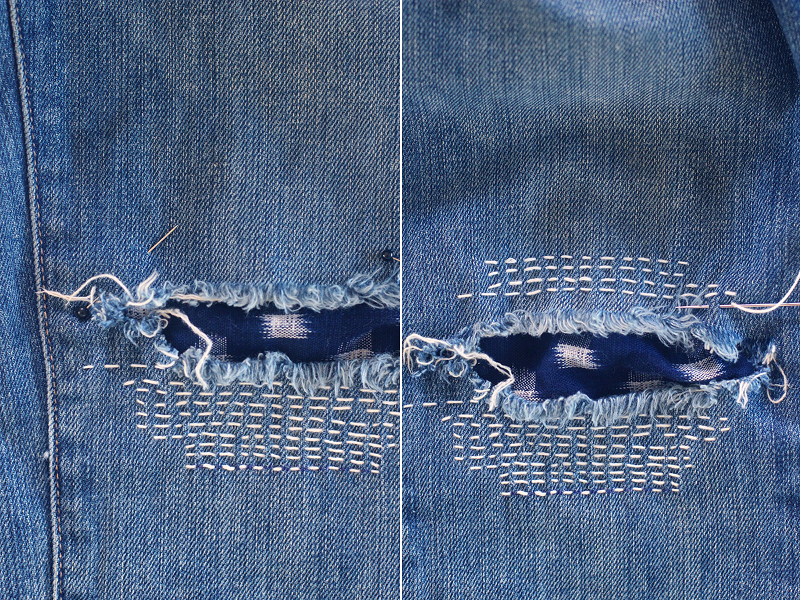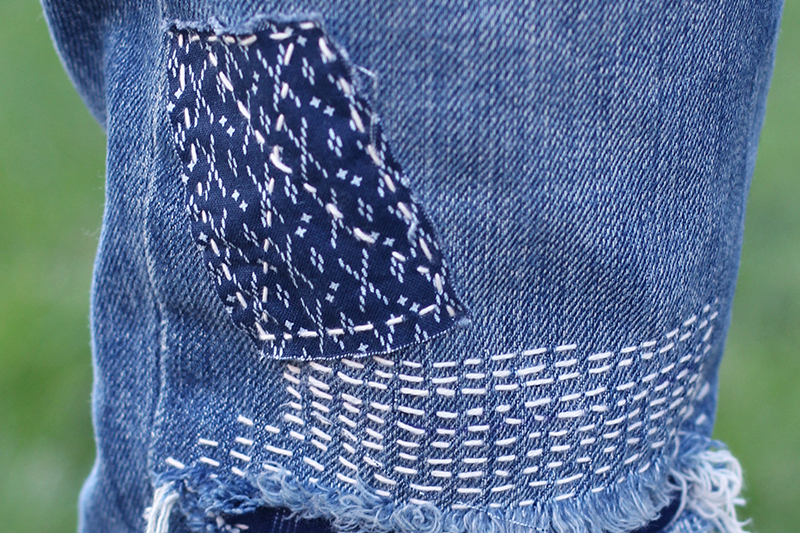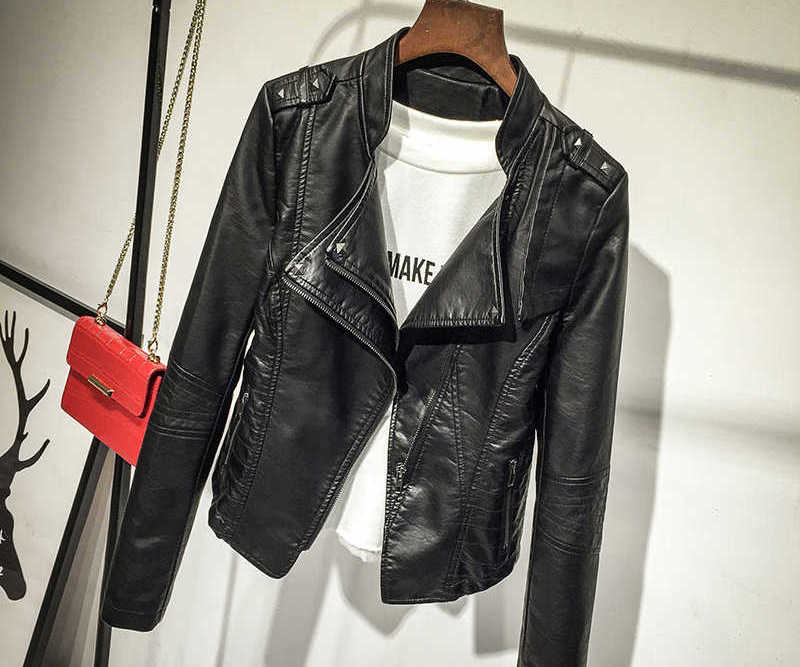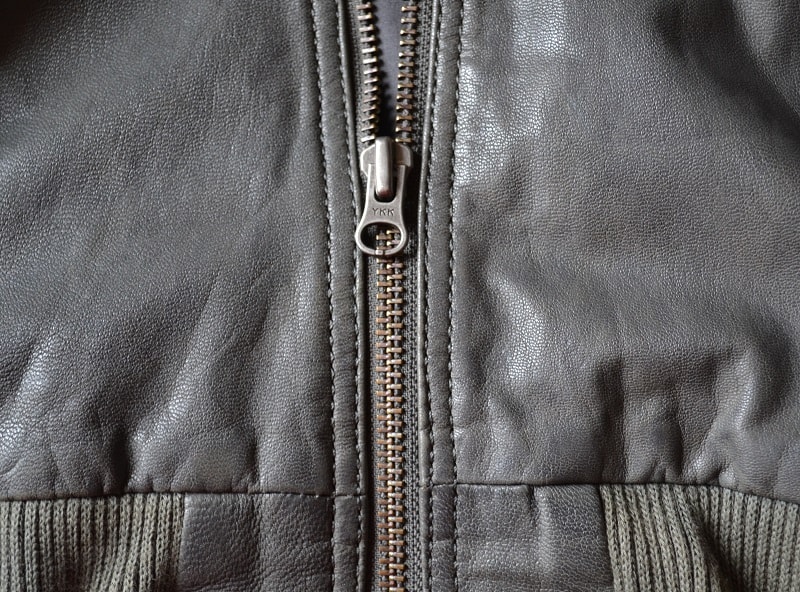Any clothing, even with careful use, tends to wear out over time. But sometimes even new, high-quality items develop tears and abrasions, which occurs as a result of catching on sharp or abrasive objects. According to statistics, trousers are the most often torn items, as they are the most complex in terms of cut. If it is not possible to go to a studio, there are many ways to sew up a hole in trousers at home. Having carefully studied the algorithm of actions and advice from experienced craftswomen, any woman can learn how to properly repair tears and abrasions without losing the appearance of the product.
Selecting threads and needles
In order to properly sew up rips in pants, as well as in any other clothing, you will need suitable threads and needles. The choice of tools and consumables should be given close attention to avoid deformation of the material, reliability of stitches, ease of stitching, and invisibility of the seam.
Using various techniques, you can quickly sew up a small hole in a shirt, T-shirt, leggings, jeans or sweatpants. The thread should be selected based on the thickness, color and quality of the fabric.
- If you take too thin - it will cut the material and tear. When sewing with a sewing machine, stitches may be skipped, the needle may break, the upper part of the stitch may be damaged, loops and waviness may appear.
- Too thick will cause the material to deform and the seam to come apart.
The balance between the thickness of the thread and the needle must also be maintained. If the finishing seam should stand out, then the thread is taken 1-2 sizes thicker. Needles are selected based on the thickness of the fabric, type of work, and type of thread. A thinner material should correspond to a thin, sharp needle and vice versa. The longer and thicker the working tool, the smaller its number on the size scale.
To process knitted trousers, use needles with a rounded end.
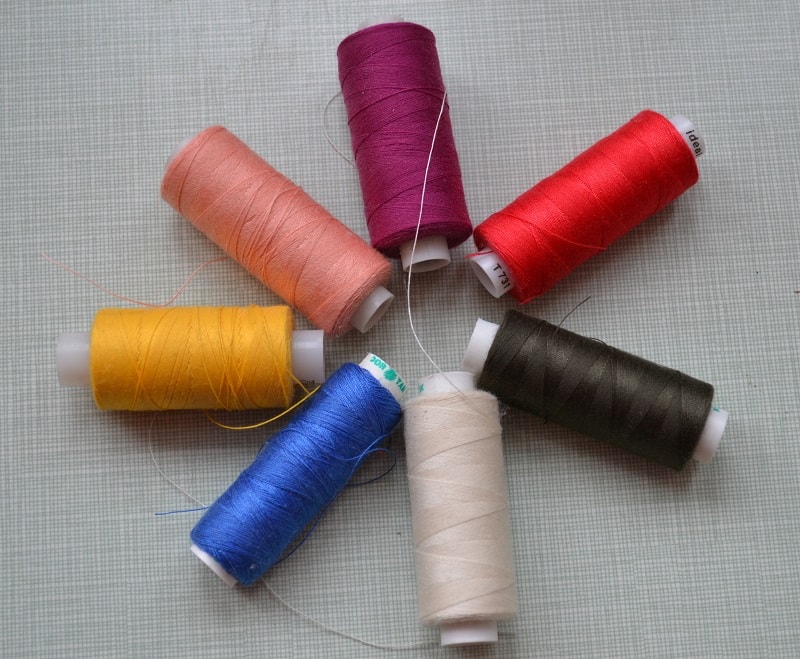
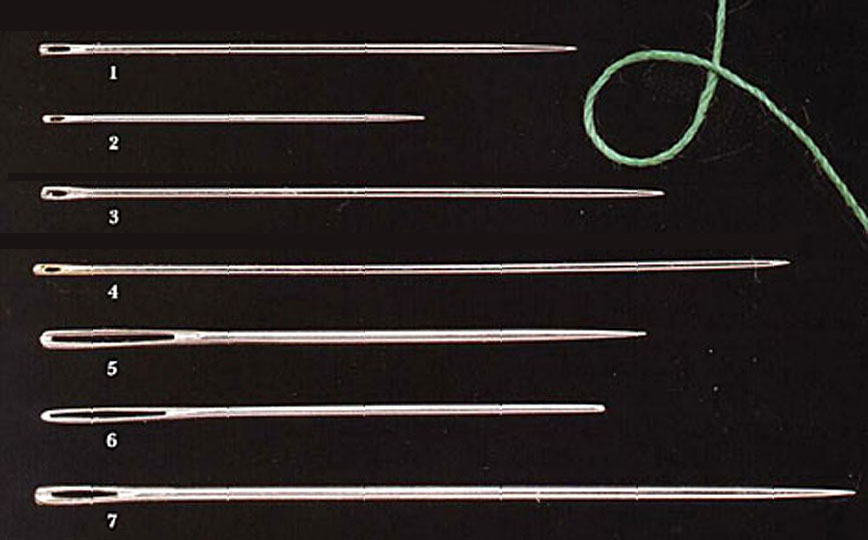
Basic methods
Methods for repairing pants in a visible place differ depending on the location of the hole or abrasion, its size, and the quality of the material. Sometimes the repair needs to be done as unnoticeably as possible, or, on the contrary, drawing attention to the work. Below we will consider only a few methods of how to sew up a hole in pants.
Blind stitch
This method is often called an invisible stitch. Before sewing pants by hand with a blind stitch, you will need a needle of the correct size and a thread that matches the color of the garment. The seam allowances should be carefully ironed when working.
Algorithm of actions on how to sew up pants:
- The needle is brought out along the edge of the fold, leaving a knot in the fold of the fabric.
- Connect both parts by piercing them at a distance of 3–6 mm from the edge.
- Bring the needle out to the front side, creating a straight stitch.
- Repeat the action, slightly pulling the thread after each stitch.
- At the end of the seam, thread the thread through the loop and tighten it a little.
- Repeat all steps until the hole is completely sewn up.
The stitches should be straight, even, and a short distance apart. This invisible seam can be used to fix a tear in any trousers. Of all the methods, how to sew up a hole without being noticed, It is suitable for small longitudinal tears in trousers. In this case, especially if the damage is located close to the seam, there will be no traces left.
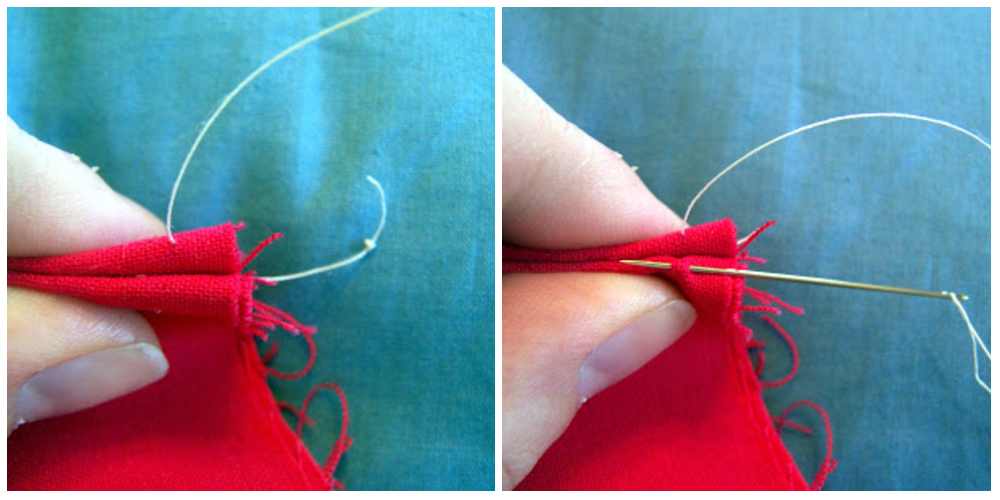
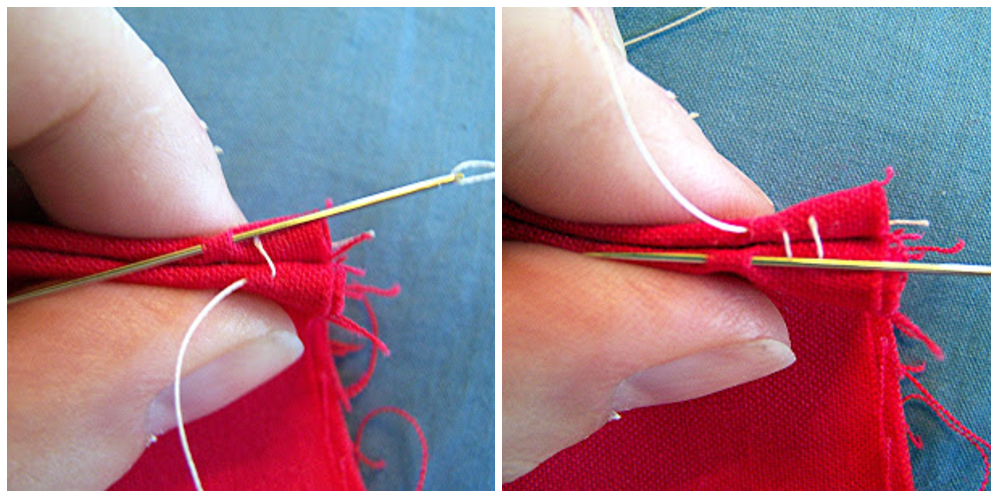
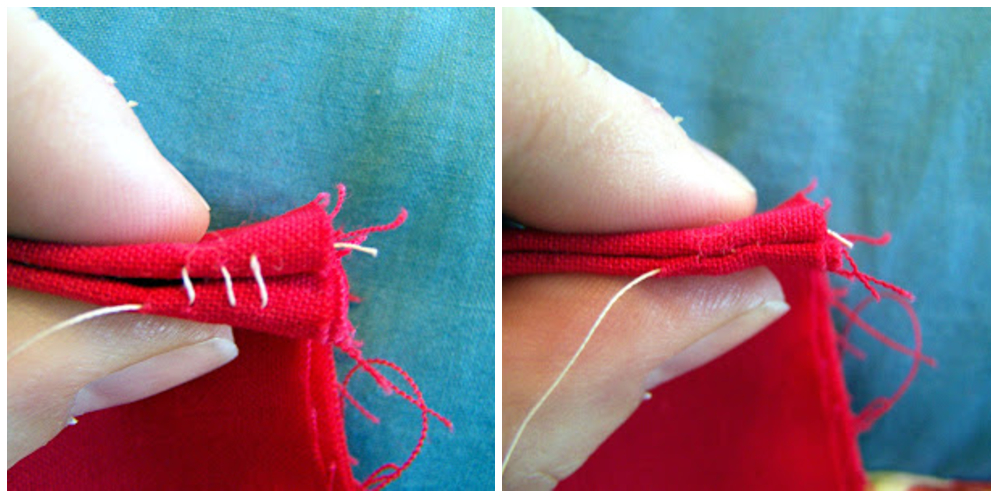
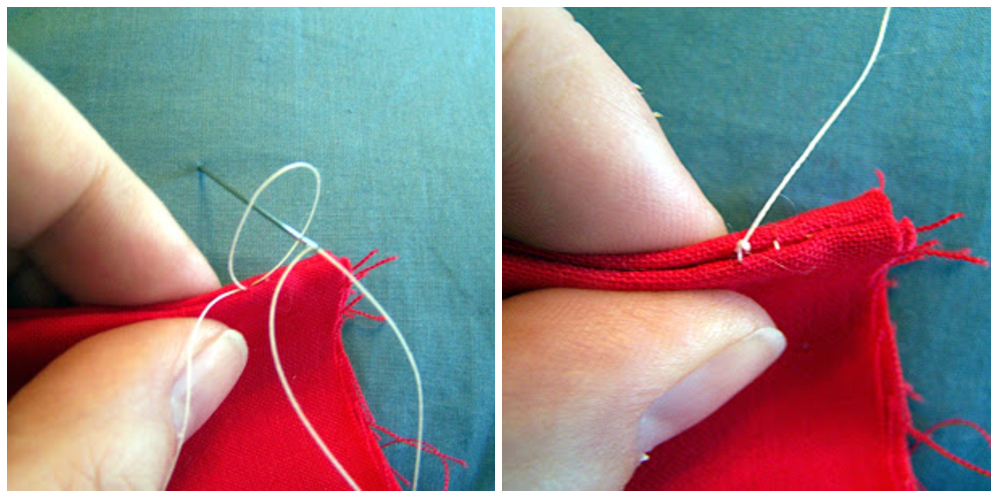
Plastering
Stitching is most often used for thick fabrics with a long pile, such as winter trousers. This method requires less material, and the traces of work are almost invisible. If the torn area is small, you can cut a piece from the hem of the product or take a piece of fabric that matches the color, pattern and character of the material of the trousers.
The patch must be exactly equal to the size of the hole. The direction of the pile and threads of the fabric must match. The torn material is fixed to a dense fabric, then a patch is inserted and also basted to it. Sew edge to edge, stitches go alternately to the main fabric, then to the patch exactly in accordance with the pattern.
On the front side the stitches should be very small, on the back side - a little larger.
At the end of the stitching, the wet material is ironed from the inside and from the front side. Thin fabric from the outside is ironed through gauze.
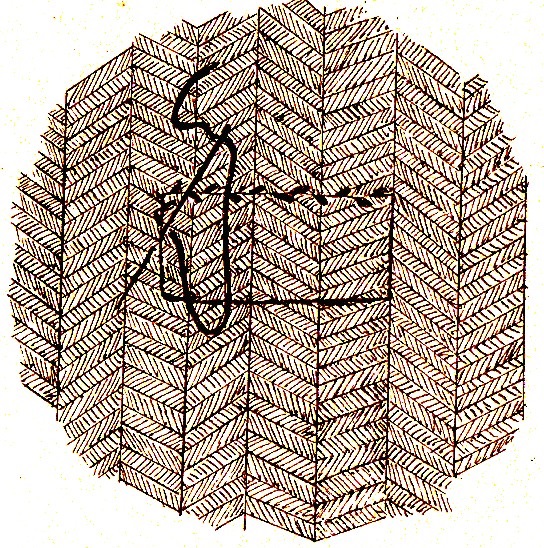
Darn
This method is a good alternative to a straight seam. Correctly done darning is almost invisible, since it repeats the structure of the fabric. You only need to carefully select the thread - pull it out from an inconspicuous place of the product or take a floss or a special darning variety. Useful tips on how to darn trousers:
- stitch the stretched fabric along the still strong places with even stitches back and forth;
- make loops at the end of the row to prevent the material from bunching up;
- when closing, work with the shared threads of the damaged area, doing the same darning across for the purpose of interweaving, as in a regular product;
- If the damage is significant, first sew a suitable fabric from the inside, then darn on the front side, selecting threads according to color and texture.
You need to sew at the same angle as the threads of the material. With this method, the darned hole will not be noticeable on either a T-shirt or jeans, and it is especially good for knitted pants because it does not tighten the material.
We darn when the fabric is not yet completely worn out, but has already begun to “glow”.
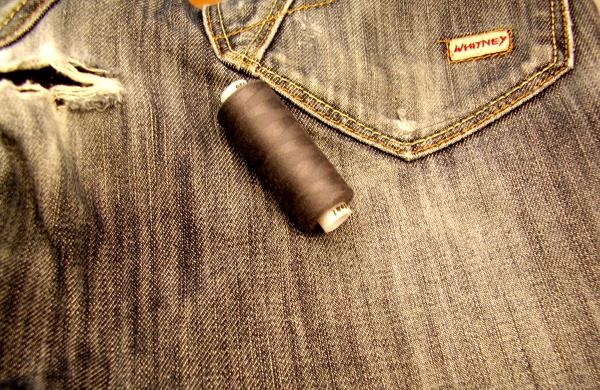
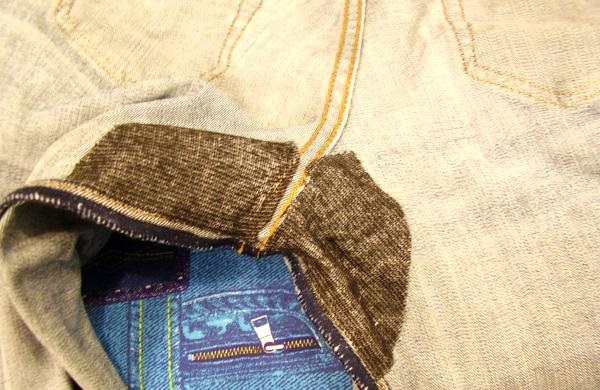
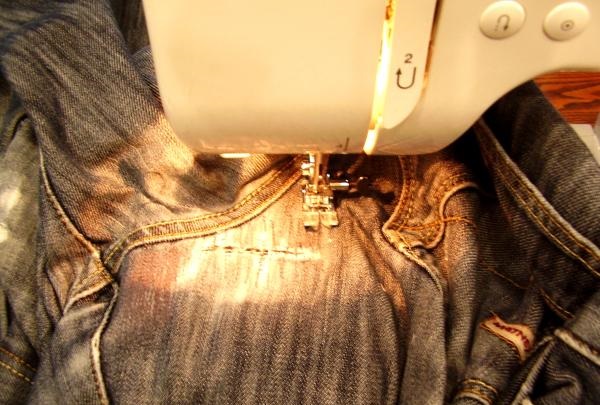

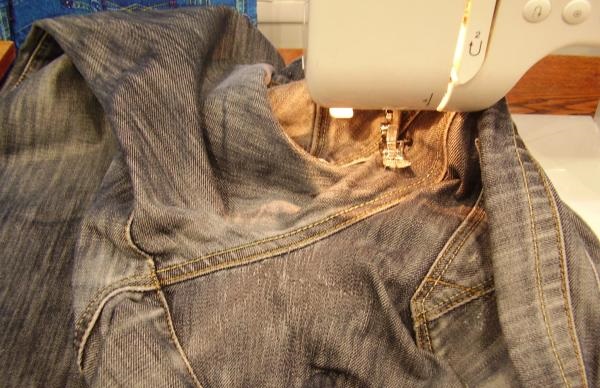
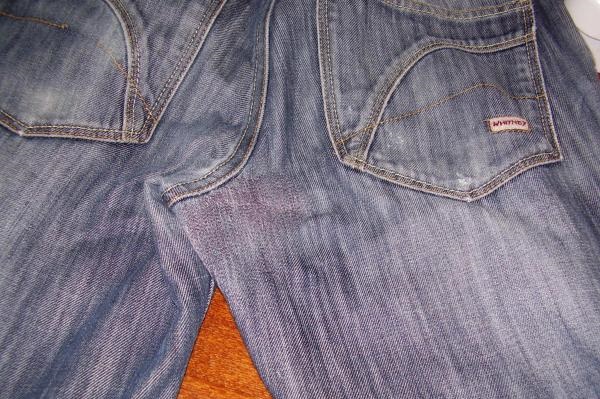
Decorative darning
Decorative darning is somewhat different from the usual one. In the second case, the craftsman tries to repeat the weave of the fabric, and with the help of decorative seams creates a pattern on the trousers. It makes sense to use such darning for items on which you need to patch up a hole, and at the same time change their appearance. There is no need to throw away the trousers or run to the studio, you can do everything beautifully with your own hands.
One of the techniques for such darning is artistic stitches. You need to prepare:
- a pattern of what you want to place on the worn area;
- mushroom or bulb to stretch the fabric.
The darning mushroom is placed on the inside under the hole. The pattern is applied to the fabric from the outside and the design is formed using stitches. If the craftsman has the appropriate skills, it is even possible to embroider a pattern, for example, with a cross.
Artistic darning can also be based on simple stitching of a fabric tear, but with beautiful, unusual stitches. It is done like this:
- Eliminate breaks in the damaged area. If there are any, cut the fabric, making the seam less noticeable. When darning, it will be completely eliminated.
- Secure the damage with thin threads in the color of the clothes at the beginning and end. This is done with large stitches on the back.
- Make 2-3 stitches from the outside along the edge, moving to the back side.
- Connect the place where the fabric is torn, and from the inside make small stitches, starting from the edges.
- Iron the seam from the inside to smooth out the edges of the tear.
- Make a zig-zag darning stitch on the outside, removing the dent in the fabric join.
- Iron the seam.
This way you can get rid of small holes. In case of significant damage, a patch of the same color is applied to the inside.
Patch or applique
A large hole can be masked with a patch. To do this, take a piece of fabric larger than the tear itself, cutting it into a rectangle. Then proceed as follows:
- The patch is placed on the outside of the hole, bending all the edges of the slightly cut tear to the inside. The direction of the threads of the product and the patch must match.
- The edges of the materials are joined as with a longitudinal rip. The back seam is then ironed, and the outer seam is stitched on a machine.
- When repairing thick fabrics, the tear is first stitched up. The beginning and end of the hole are trimmed and joined with frequent stitches across the tear.
- After applying a rectangular patch, connect the edges of the damaged area with a lapped seam through the front side. The thread should be selected to match the color and texture of the material, and the direction of the threads on the fabric should match the direction of the threads of the patch.
If the damage is on satin or silk, the repair will not be noticeable. In this case, decorative darning is done, a zipper, pocket or interesting print is sewn in. It is easiest to make an applique on the damaged area - they are sold ready-made in any handicraft store. The picture is chosen according to taste, texture and ironed if it is on an adhesive base. Otherwise, you can use interlining or "spider web". Interesting embroideries and other decorations of various themes will refresh the trousers, make them stylish.
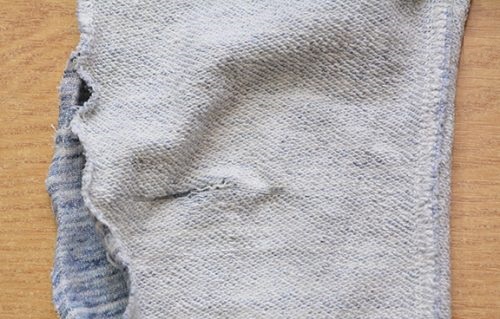
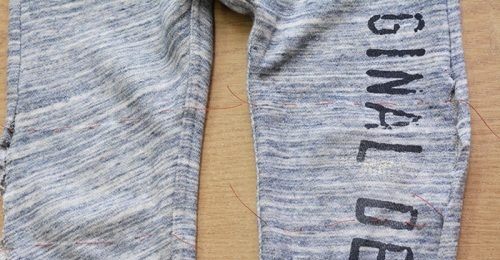
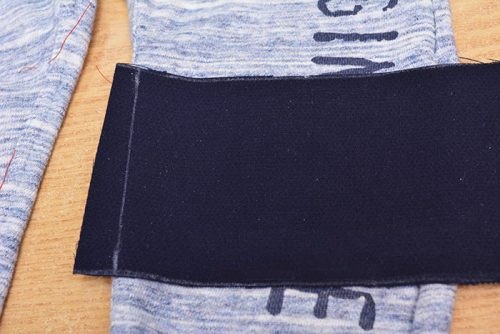
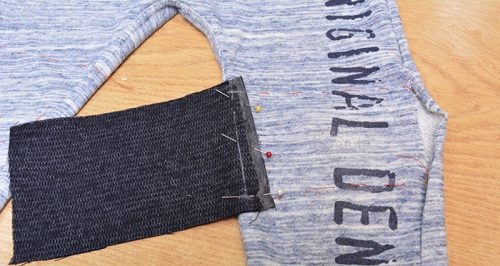
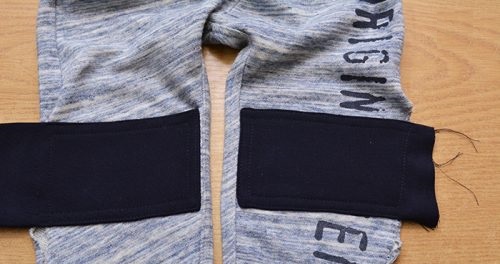
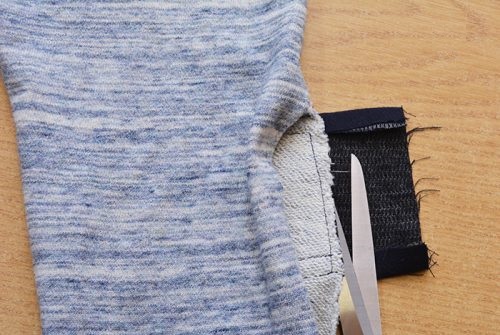

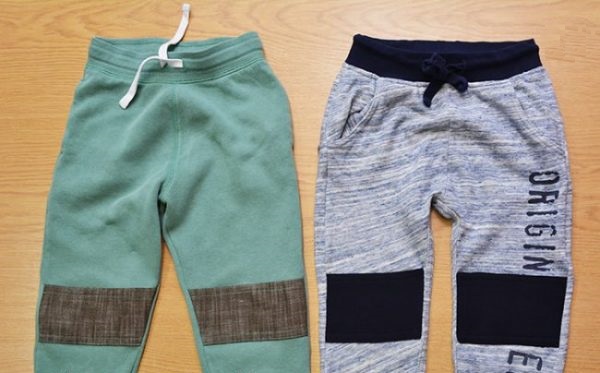
Features of working with different types of trousers
Repairs to strict classic trousers are usually carried out very carefully, without the use of various overlays or prints. In a business suit, the area of wear must be carefully examined to determine whether it can be repaired. Small holes and tears are mended by bringing the edges together so as not to attract attention. Most often, repair of classic trousers requires:
- Elimination of small holes and tears in inconspicuous areas. They can be glued by cutting a piece of interlining larger than the hole and basting it from the inside. After this, the item will need to be ironed.
- Repairing the bottom of trousers with tape, hemming, shortening. The tape is replaced with a new one, placing the thickened edge 1–2 mm below the trouser leg. Sewn on both edges with a hemming stitch. Trouser cuffs are shortened by unpicking the folded edge, cleaning it and stitching it. After ironing, the fabric is folded a few millimeters above the unworn edge.
- Connecting a tear along a seam. In the turned state, you will need to stitch the tear areas, closer to the damage, finishing after a few centimeters. Difficult areas must be processed manually 2-3 times.
If the tears are large, visible or deformed, the trousers cannot be repaired.
You can sew up a hole in tights, sweatpants, leggings using the methods described above. You can also do artistic darning on them so that the tear is not visible, using large patches and ironing after finishing the work through a damp cloth. It is acceptable to use decorative darning by sewing in a light lock.
You can be more free with children's trousers and jeans. Holes are not a reason to throw them away or send them to the country. Damage to trousers can be carefully darned or patched up. Another great option is to sew in decorative elements, prints, attach fringe. All this looks organic on children's things, their appearance becomes stylish and updated.



Jeans repair
Damage to jeans can be repaired in different ways, depending on the size of the hole and its location. Most often, darning and patching are used; in some cases, a basting stitch will do.
In the pocket
A small hole can be mended by making several small stitches with the same type of thread. It is important to try to lay the stitches loosely, in accordance with the weave of the fabric. For small, undeformed tears on the back pockets, you can make a patch with decorative darning. For large tears, stains or holes, you will have to use prints or artistic embroidery. For the latter, use floss threads. You can apply a sketch:
- copying;
- water-soluble marker;
- an overlay on non-woven fabric, cut out and attached in place;
- using an overlay canvas, which is pulled out of the embroidery after the work is finished.
It is permissible to cut a hole of the correct geometric shape, making inserts from tulle or guipure. The edges of the hole should be bent beforehand.
Between the legs
This is the most insidious place of damage. To mend the hole, you need to cut a patch from the same material, if the jeans have already been shortened, or something similar. The procedure:
- The pants are turned completely inside out, placing the patch on top and covering the problem area.
- The trousers are sewn up with plain threads that match the color of the material.
- Combine the grain lines on the patch and the material to make it less noticeable.
- After this, the hole in the jeans is stitched by hand using zigzag stitches.
Threads should only be used in the same color as the fabric, otherwise the work will take on a handicraft look.
If you are working on a machine, you can make a stitch by first laying a patch of a similar color on the inside. The lines are made from threads of a similar color, trying to adhere to the direction of the threads of the fabric of the product. The seam is brought out a centimeter beyond the edge of the hole, placing as many reverse lines as possible.

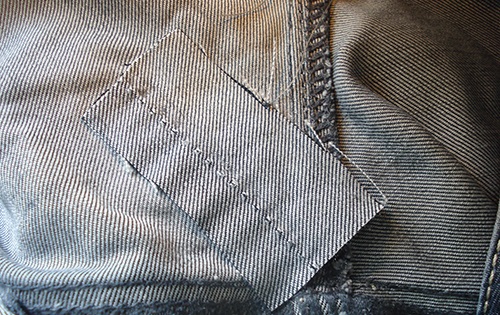

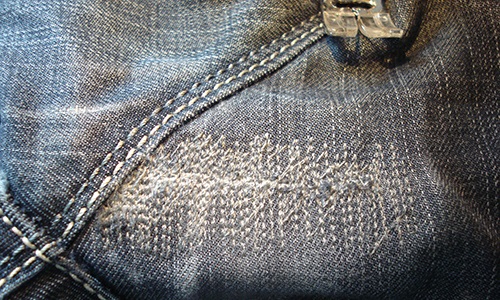


Along the seam
Sometimes it is necessary to repair trousers that are torn along the seam or near it. The first happens due to poor-quality threads, the second - due to sewing errors, when the seam is made too close to the edge. Any longitudinal hole in the fabric is easily repaired. To do this, you need to connect the torn edges of the fabric from the back side and fasten them with a standard basting stitch. You should act carefully, keeping small intervals, otherwise the line will look unsightly from the front side at the repair site. You can strengthen it by overcasting the edges of the fabric. Finally, iron the product along the seam.









Behind
Damage in this area can occur not only due to the wear of the fabric, but also as a result of snagging, for example, on a nail. You can simply put a fashionable patch, but there are other ways to carefully repair the product:
- Small holes are sewn up with plaster.
- Large holes, deformed snags or stains require the use of a patch.
A small, undeformed tear can be sealed with interlining. To do this, apply a piece of material slightly larger than the hole to the inside with the adhesive side, having first brought the edges of the tear together and removed the fringe. After that, iron it with a hot iron. For reliability, it is better to apply a decorative seam on the outside, since the interlining may come off under heavy loads.

On the knee
This is the place where denim most often tears in children. A patch here will always be noticeable, so it is necessary to make a decorative element out of it. The repair will require a piece of denim of a contrasting color. Step-by-step tips on how to sew up a hole on the knee, to make the damaged area look neat:
- cut out a piece of fabric with a side of about 15 cm with a hem allowance of 0.5–1 cm;
- baste the patch, tucking it in at the edges;
- sew on a sewing machine;
- repeat the procedure on the second leg.
Having repaired both legs in this way, you get a finished and beautiful product. An unconventional solution to the problem involves enlarging the hole and giving it a fashionable look. To do this, the hole is enlarged and the edges are frayed.
Radical methods
Sometimes the bottom of your jeans or knees are hopelessly ruined, or you just don’t want to bother with artistic inserts. In this case, you can transform your once-favorite item into shorts or a skirt, after washing it first. If you plan on adding fringe at the bottom, you will need to add a couple of centimeters to the length of the item. To create a miniskirt, you will need to unravel the middle seams up to the zipper, and then sew them according to the pattern. With shorts, everything is much simpler - the legs are simply cut to the desired length, a hem is stitched at the cut points, or a “torn” edge is left.
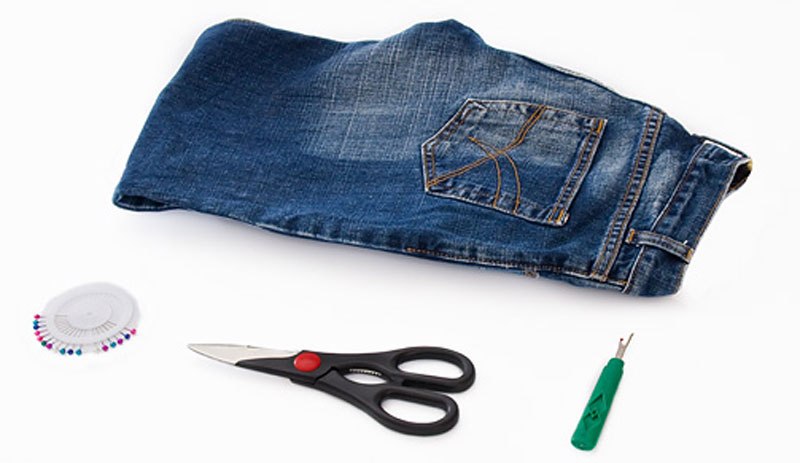

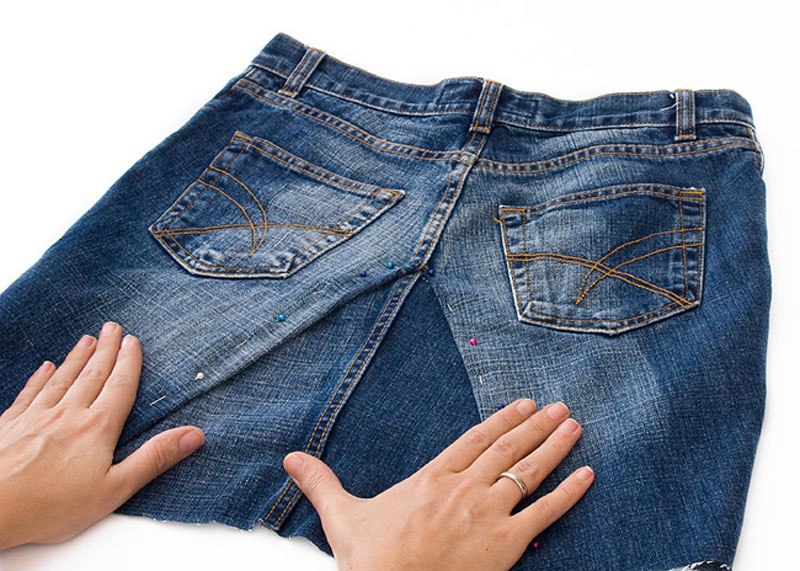
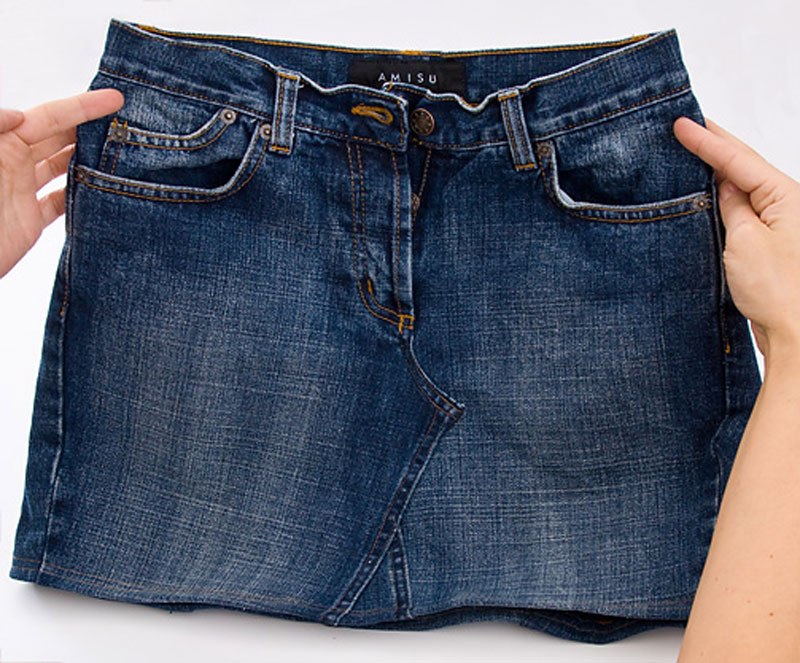

Useful tips
The needle plays a central role in the process of eliminating a hole in trousers, so experts have developed a number of recommendations regarding this tool:
- When repairing clothes, it is important not to use rusty needles - they leave stains on clothes that are difficult to remove.
- The modern industry offers sewing tools with platinum coating, which are not subject to corrosion - they are a little more expensive than usual, but justify their cost.
- It is important to remember that different needles should be used for different jobs, and after the process is completed, they should be stored in a dry place, in special boxes, stacked according to shape and size.
- If the needle breaks, you need to make a knot by starting sewing from the previous stitch.
There are also a number of other tips that will make the repair process easier:
- When ironing, always turn the clothes inside out and try to iron them through a wet cloth.
- When finishing denim, you should select threads that match the color, otherwise the work will look untidy and home-made. The same rule applies to other fabrics, unless there is an artistic intention to make a darning or patch with contrasting threads.
- When working with crumbling material, it is treated with a special liquid. Some fabrics, such as nylon, can be carefully melted over a fire, but this should only be done by those who are confident in their abilities.
Following these rules will reduce the time spent on mending a hole and save the family budget, because you will have to contact specialists much less often to repair damage to your trousers.
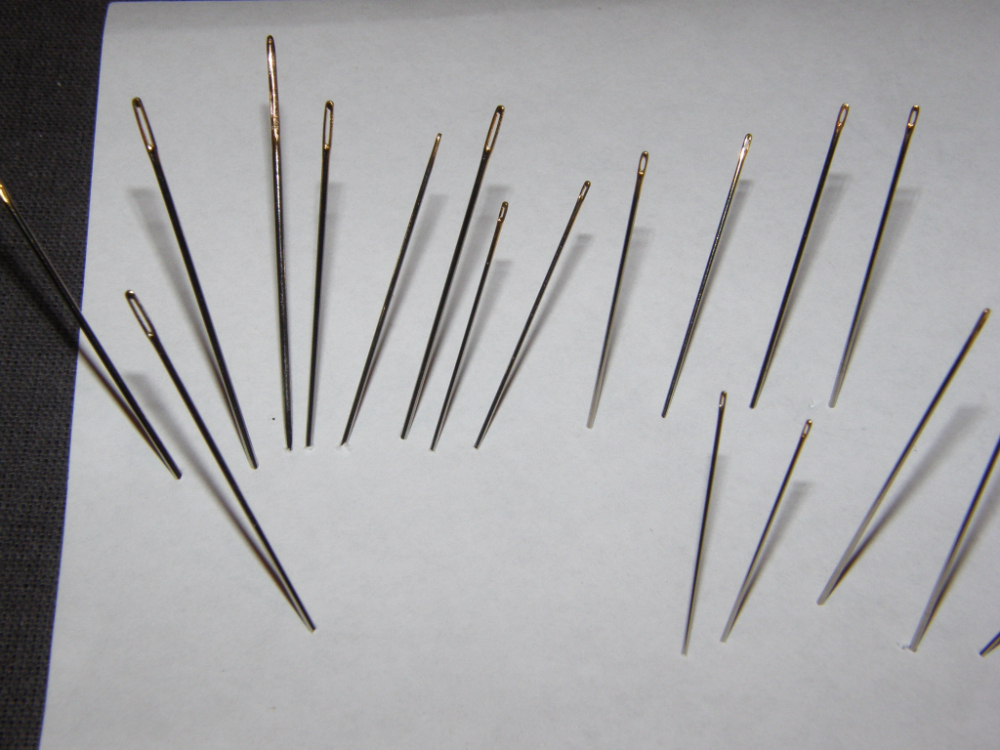
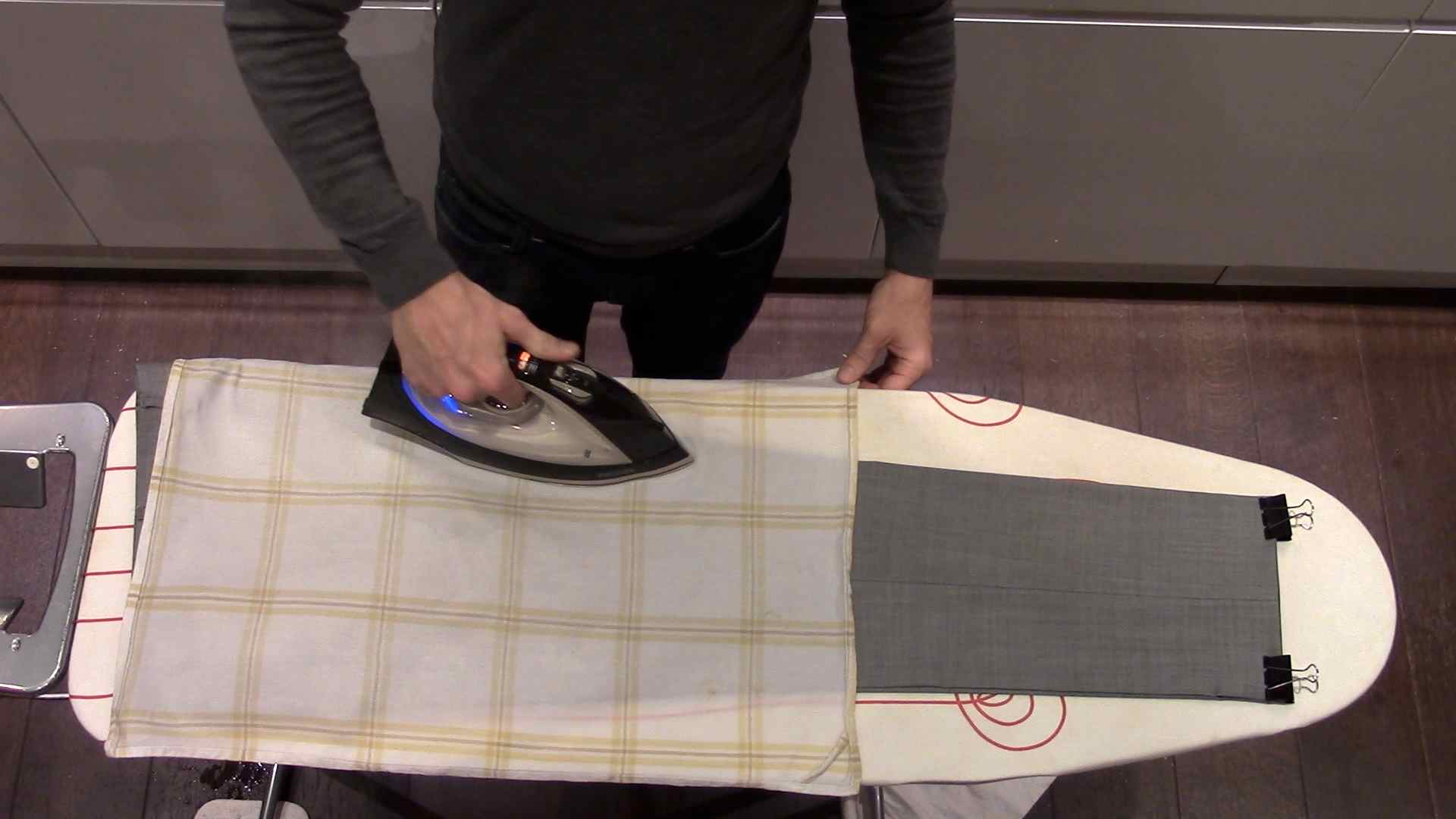
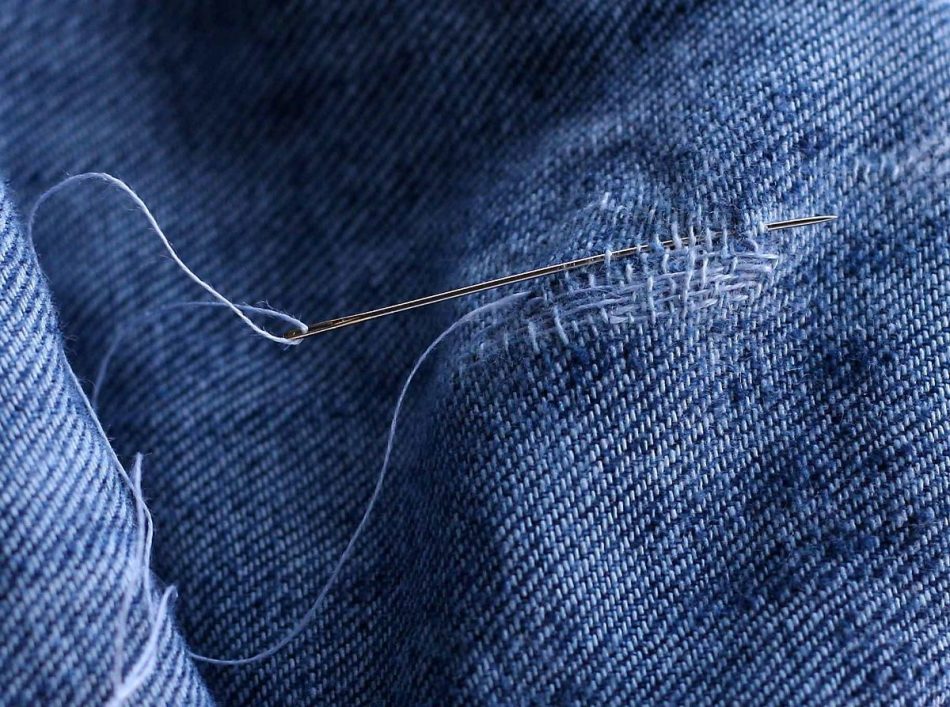
Video
https://youtu.be/l_clbeXb3Sc

